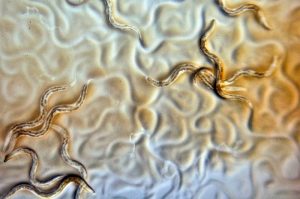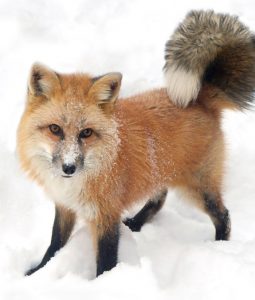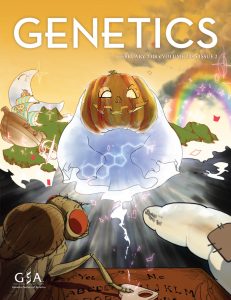Enter your address to receive notifications about new posts to your email.
Science & Publishing
-
Science & Publishing
Inside the genome of a deadly desert disease
Rhinocladiella mackenziei is a fungus that infects the human brain. It is the most common cause of neurological fungal infections in arid regions of the Middle East, and it is fatal in 70% of cases. However, little is understood about this lethal pathogen—not even its natural habitat. To learn more about the biology of R.…
-
Science & Publishing
‘Worm’ing through chromosome 21 for overlooked Down syndrome genes
There’s no doubt that an extra copy of chromosome 21 is what causes Down syndrome. There’s a lot of doubt, however, over which particular gene—or combination of genes—on chromosome 21 is the actual cause of its symptoms. To flesh out our understanding, geneticists must grapple with this large chunk of the genome that includes more…
-
Science & Publishing
The fox and the cranium
Although foxes look cuddly, these wild animals are equipped with sharp bites—and temperaments to match. Fear not, however, if you’re dying to get close to theses fluffy foxes: a nearly 60-year-old experiment has produced a line of them that are friendly enough to pet. The process of creating these tame foxes mirrors the way…
-
Science & Publishing
Three GENETICS articles from 2017 recognized with Editors’ Choice Awards
Congratulations to the winners of the Editors’ Choice Awards for outstanding articles published in GENETICS in 2017! The journal’s Editorial Board considered a diverse range of articles, finding many papers worthy of recognition. After much deliberation, they settled on one exceptional article for each of the three award categories: molecular genetics, quantitative genetics, and population and evolutionary genetics.…
-
Science & Publishing
Zooming in: population genetics on a mitochondrial level
The mitochondria powering your cells are not all genetically identical. Genetic variation across the mitochondria of a single individual is common. This diversity is called mitochondrial heteroplasmy, and it plays an important role in the severity of mitochondrial disease. Problematically, the complexities of mitochondrial inheritance makes it extremely difficult to predict how this diversity is…
-
Science & Publishing
From fish tank to bedside
Yeast and zebrafish are among the lab organisms being recruited to the search for rare disease cures. Rare diseases are not so rare. About 300 million people worldwide live with the more than 7000 individual diseases that are designated “rare” by the US government. But because each of these affect so few individuals, the usual…
-
Science & Publishing
Get outbred: Genetic diversity in laboratory gerbils
Biologists rely on animal models to answer important questions that can’t be addressed with cells in a dish. Often, these animals are deliberately inbred; a less diverse population of animals means that data obtained from experiments with these animals will be less noisy and easier to interpret, so fewer animals are needed for meaningful results.…
-
Science & Publishing
Worm studies reveal cells on the move
Consider the papercut—a minor injury best known for the disproportionate amount of pain it can cause. That a wound so inconsequential can sting so terribly is curious, but perhaps even more surprising is the fact that it heals at all. To heal a wound, even one as trivial as a papercut, the cells involved in…
-
Science & Publishing
How baker’s yeast turns from friend to foe
Beer, doughnuts, and genetics textbooks have one thing in common: they were all made possible by collaborations between humans and yeast. Our fungal ally Saccharomyces cerevisiae resides not only in breweries, bakeries, and laboratories, but also sometimes in our own bodies—where, on rare occasions, it betrays us. S. cerevisiae is increasingly being reported as an…
-
Science & Publishing
Behind the cover: Drosophila Halloween genes
Fruit fly mutants can sometimes be grisly. Ecdysteroid hormones control aspects of fly development, including molting and metamorphosis; because aberrations in these genes lead to embryos with a ghastly appearance, they have been collectively dubbed “Halloween genes.” In a study published in GENETICS, Uryu et al. investigated how the expression of these genes is regulated.…
-
Science & Publishing
Using CRISPR for tissue-specific gene knockouts in Xenopus
Why study human diseases in frogs? For starters, 79% of genes implicated in human disease have orthologs in the African clawed frog Xenopus laevis. Frogs also produce hundreds of embryos that can be grown in a dish, meaning they can be manipulated in ways that are impractical on a large scale in mammals. For example,…











